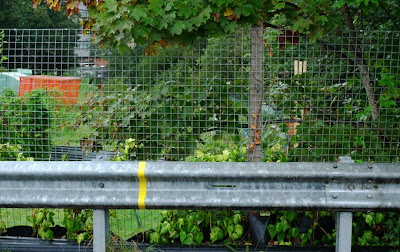It generally does no good to explain that I am not a pixel-peeping gear-head with views on the relative strengths of in-body versus in-lens image stabilisation, or that in my opinion one camera at the same price point is much the same as any other and that, in the end, you get what you pay for and the real question is, will you ever make use of half of what you've bought? No: I have been outed as a photographer, and it seems to matter to some people what I think. Flattering, I suppose, really. But, as the venerable saying has it: in the world of the blind, the one-eyed man is king.
In the extremis, as Phil Esterhaus used to say on Hill Street Blues, I have been known to direct the enquirer to find out what the intended recipient's favourite colour is, and to go with that. Or to say out loud the sacred names "Canon, Nikon, Olympus, Panasonic, Pentax, Sony" and to make a note of the one that feels most pleasing or auspicious to invoke. I never include the name "Leica" in this incantation, of course, as I'm not prepared to be responsible for the consequences.
The more interesting (and genuinely flattering) side of becoming known as a photographer is that people want your opinion of actual photographs, sometimes their own, and sometimes -- less hazardously and more interestingly -- those they have come across. As a person who has held strong opinions on most things since firmly rejecting green vegetables at age three, I have constantly to remind myself that having a broad spectrum of strong views is not the normal human condition. I have learned to tread carefully. A snort of derision ("Ansel Adams!") can crush the green shoots of curiosity as effectively as a boot heel, whereas an admiringly raised eyebrow ("Richard Misrach?") can be all that is needed to drive through the green fuse a mighty oak of creativity.
The thing that emerges consistently for me from these random encounters is the extent to which people are held back by an elevation of subject matter over "making pictures". Most people, understandably, take photos "of" something. They want to represent what they see. After all, it's the obvious strength of photography over, say, drawing: it is quite hard not to achieve an acceptable likeness of the reality presented to the camera. But, on the other hand, it is still just as hard to produce a good picture "by, with, or from" the subject rather than "of" the subject.* That is, to make a satisfying arrangement of two-dimensional marks on a flat surface. This (in my view) is the only really productive approach to photography.
It doesn't help that famous photographers are often known by their characteristic subject matter, in a way that painters tend not to be. It confuses people about the "how" of great work. They think, "If only I could stand in the desert where Richard Misrach stood, or find before me the interesting people that Richard Avedon found, or be present at scenes of heart-breaking tragedy like Sebastião Salgado, then I, too, would take great photographs." Well, no, actually you wouldn't. Because, let's be honest, you can't even take an interesting photo of the family Christmas tree.
This has little to do with "art". No-one employs an "artist" to represent the sinks and stoves in a kitchen catalogue, after all. They're just photographs. But the question that few aspiring photographers ask is, how is it that the photographs in the humblest product catalogue or cookbook far exceed in quality and impact anything I can achieve? It's similar to our unquestioning acceptance, as naive filmgoers, of the astonishing but artfully transparent feats of the cinematographer.
Just a little thought, a little analysis, and a lot of looking at good photographs, will raise interesting questions about colour, composition, lighting, and lenses to which, it turns out, there are conventional answers which are reliably known to work (see: the kitchen catalogue) and, sometimes, new, exciting, original answers (see: Misrach, Avedon, Salgado). Learning to appreciate the difference -- basic visual literacy -- is the first giant step down the road to making an interesting photograph of the family Christmas tree.
At least, that's what I tell the few people who don't flee once I have evaded their question about the quality of their holiday snaps and have started to rant about kitchen catalogues and Christmas trees.


* Genitive versus ablative photography, perhaps?


1 comment:
Mike
When seeking guidance, who better to ask than someone with a proven track-record?
I'm sure the thoughts you express in this post will help bend the minds of some who want to make pictures.
Post a Comment